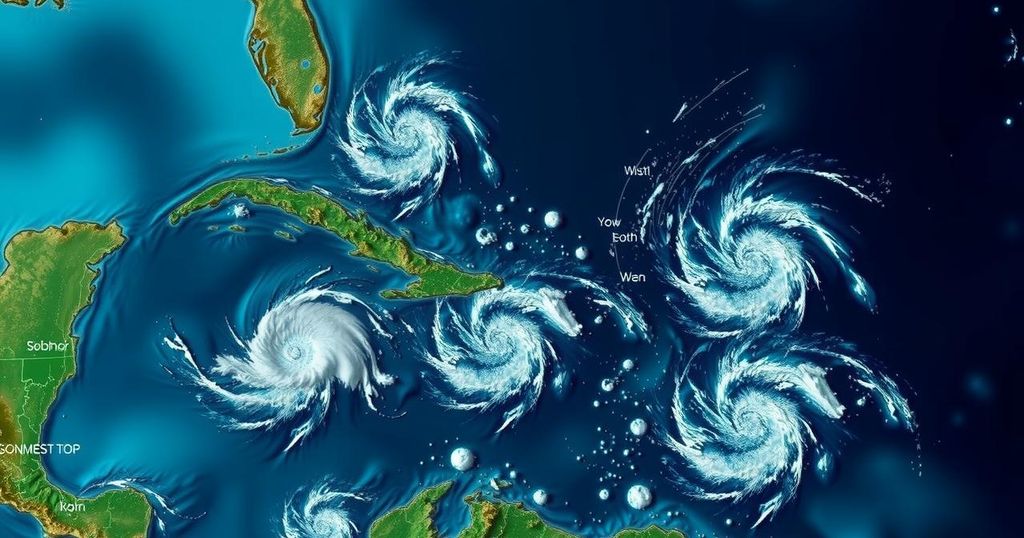Hurricane Rafael may disrupt the formation of Tropical Storm Sara in the southwestern Atlantic, which currently has a low chance of developing due to Rafael’s proximity. Rafael is expected to strengthen before making landfall in Cuba and poses indirect threats, including flooding and tornadoes, to parts of Florida.
Hurricane Rafael, which intensified into a Category 2 hurricane, may hinder the development of Tropical Storm Sara in the southwestern Atlantic. As of Wednesday, Rafael was producing sustained winds of 115 mph and is expected to strengthen further before making landfall in Cuba. Concurrently, there is a 30 percent chance for a weather system in the region to evolve into Sara, though meteorologists suggest this formation is unlikely due to Rafael’s impending influence. AccuWeather’s senior meteorologist, Alan Reppert, indicated that Rafael’s closeness could disrupt the developing system, which is already facing unfavorable environmental conditions. Should Sara emerge, it may affect the northern Caribbean and southern Bahamas, with possible impacts on Florida as well. The National Hurricane Center reported a trough generating disorganized precipitation nearby, hinting at potential low-pressure formation moving westward. Regardless of how the situation evolves, the inclement weather is likely to bring rainfall to parts of the Caribbean, while Rafael poses risks of coastal flooding and potential tornadoes to the Florida Keys. In summary, while Tropical Storm Sara may seem plausible, Hurricane Rafael’s presence poses significant challenges for its formation and development in the Atlantic. The situation remains dynamic, warranting careful monitoring by meteorologists and residents in the affected areas.
As tropical systems develop in the Atlantic, meteorologists closely monitor their trajectories and interactions. In this instance, Hurricane Rafael has intensified rapidly, creating concern that it may inhibit the formation of another storm, Tropical Storm Sara. The dynamics of such systems can be complicated by their proximity to each other, necessitating a keen observation of prevailing conditions in the Caribbean region. The potential impacts of these developments affect millions living in the region, particularly in Florida and the Bahamas.
In conclusion, Hurricane Rafael is poised to significantly influence the potential development of Tropical Storm Sara in the southwestern Atlantic. Despite a modest chance of formation, meteorologists predict a likely disruption due to Rafael’s strength and trajectory. Observers in the Caribbean and potentially impacted areas in Florida should remain vigilant as these weather systems evolve.
Original Source: www.newsweek.com






